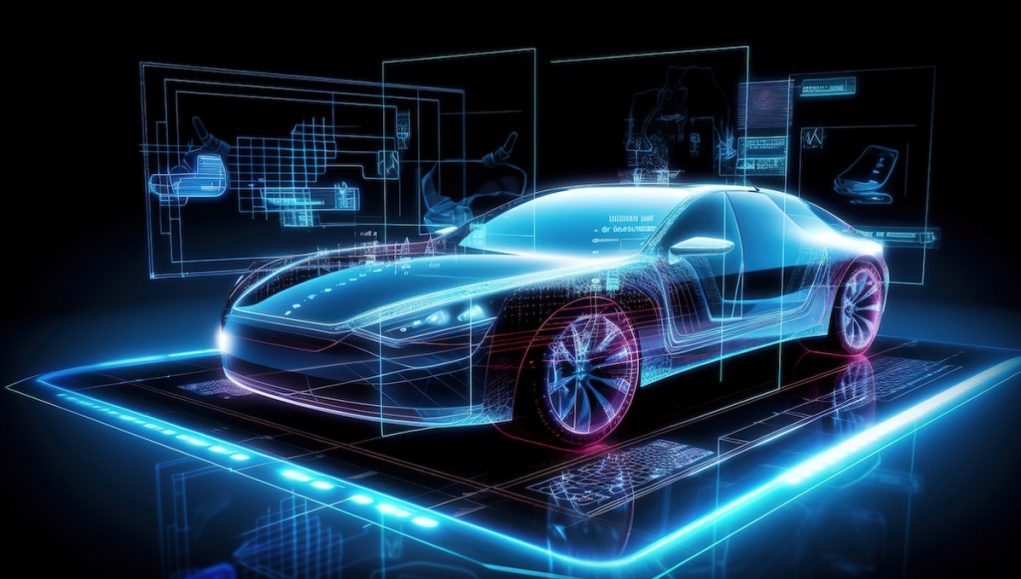Get ready for the future of automotive technology! Just five years ago, we entered the Vehicle 2.0 era, taking the first step towards a more distributed, digital model. Now, we’re on the brink of the Vehicle 4.0 era, where software-defined vehicles will revolutionize the industry.
Russ Ruben, director of automotive and emerging segment marketing at Western Digital, compares this shift to going from a flip phone to a smartphone. With Vehicle 4.0, your car becomes a hardware platform for applications that can be continuously updated over the air. This means your vehicle can stay up-to-date with the latest software and firmware, maintaining its value for close to a decade.

While fully autonomous vehicles may still be a decade away, Vehicle 4.0 is set to transform the automotive industry with its innovative architectural changes. This includes dynamic data processing between the vehicle, edge, and cloud, continuous software and firmware updates, modularized hardware for easy serviceability, and more. Exciting times lie ahead!
From hardware to software
In the past, software and hardware were tightly integrated in vehicles, making it difficult to update individual software functions. However, with software-defined cars, hardware and software are decoupled. Applications interact with hardware services through hardware-agnostic interfaces, allowing for independent development and easier software updates.
For example, advanced driver-assist systems (ADAS) require significant hardware in the form of sensors. But the processing and improvement of sensory data can be achieved through regular software and algorithm updates, enhancing vehicle safety without the need for hardware changes.
By reducing hardware fragmentation and incompatibility, an abstraction layer enables a physical restructuring of the vehicle. Hardware and software are assigned to specific zones or domains, centered around a central computer.

Each zone acts as a gateway for data and electric power distribution. The location of each zone controller determines its specific input/output (I/O) responsibilities. This allows the domain controller to focus on higher-level compute functions. The ethernet standard serves as the electronic/electrical backbone, scaling to meet the growing bandwidth needs of in-car networking while reducing connectivity costs and cabling weight.
Vehicle 4.0 also opens up opportunities for third-party developers to create innovative entertainment apps for infotainment systems. OEMs can continuously upgrade safety, connectivity, and efficiency applications through over-the-air (OTA) updates, ensuring the vehicle remains up-to-date with the latest features.
Understanding the impact on data storage
As we move towards Vehicle 4.0 and fully autonomous driving, cars will become rolling data servers. With increased connectivity, advanced driver assistance systems, and AI integration, auto functions will require more compute power and storage. Estimates suggest that up to 11TB of storage may be needed.
To fully embrace the potential of software-defined vehicles, real-time on-board data processing becomes crucial. This requires high-performance, high-capacity storage that allows for quick data movement. A new storage architecture is needed, where multiple applications access a central storage device with features like data storage sharing, reduced latency, and encryption.
As the vehicle gets closer to driving itself, the importance of high quality and reliability in storage becomes even greater. Storage needs to keep pace with the evolving demands of Vehicle 4.0.
Developing storage for the future
Car manufacturers and tier-one suppliers face the challenge of developing systems for software-defined vehicles. A long-term data strategy is essential, with storage playing a crucial role. It’s important to understand future workloads and capacity needs to ensure the right storage solutions are in place.
Ruben suggests going one or two capacity points higher than the current requirements and adopting a modular architecture for serviceability. This allows for easy upgrades or replacements of storage devices as needed.
Collaboration between hardware and software developers is key. Storage should be considered early in the system architecture design process to ensure compatibility and optimal performance.
As we look towards the future, Western Digital is evolving alongside chipset vendors to support the protocols and interfaces necessary for the vehicles of today and tomorrow.
To learn more about the evolution towards a more adaptable, software-driven vehicle and the opportunities and challenges ahead, visit westerndigital.com/solutions/automotive.




















